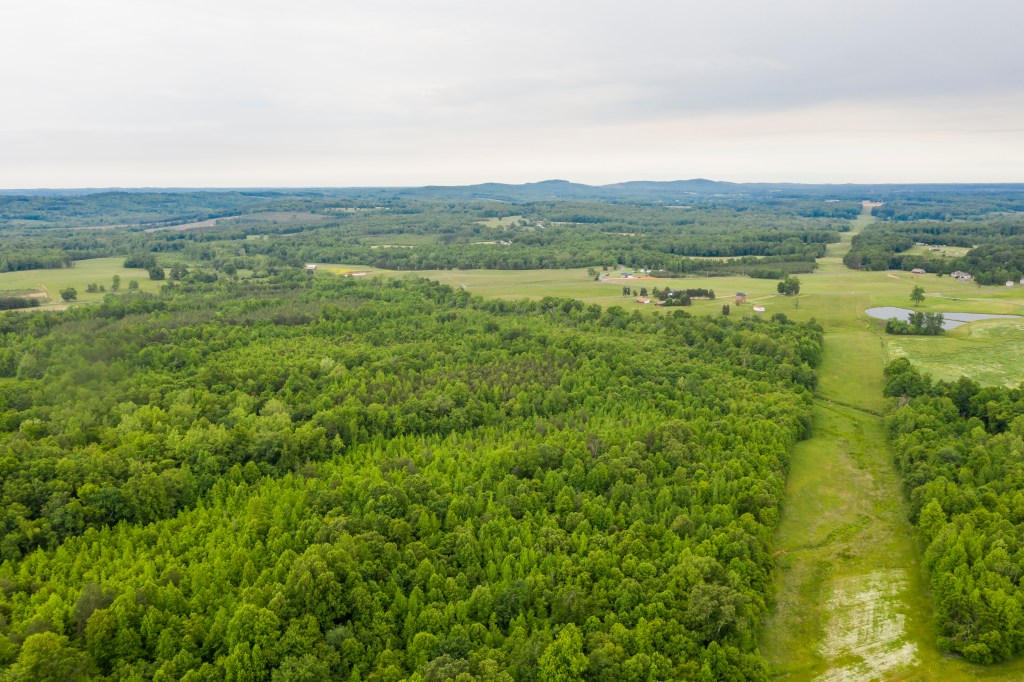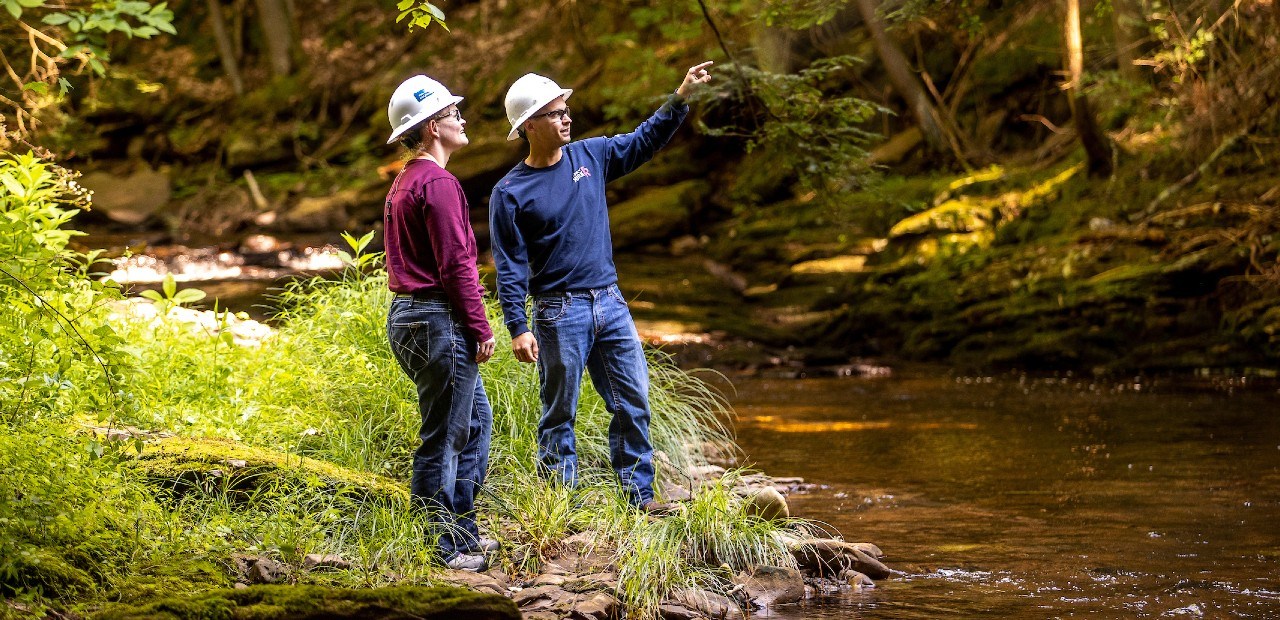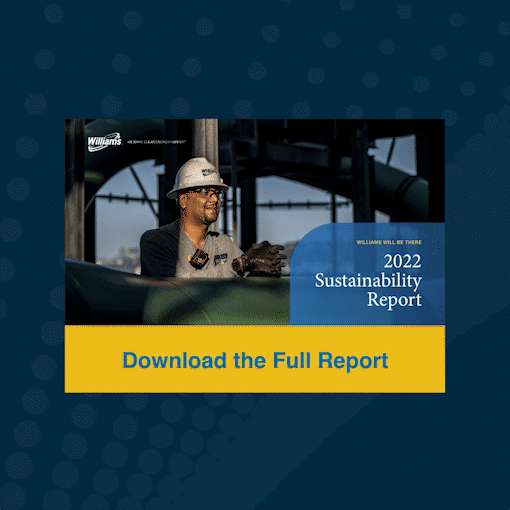Williams supports environmental justice and seeks to involve residents and leaders from all socioeconomic backgrounds in our engagement activities. We actively pursue opportunities to conduct dialogue with overburdened communities, which may include people of color, low income, rural, tribal, indigenous and homeless populations around our projects and in our operating areas to gain a meaningful understanding of the critical issues they face. Williams also views environmental justice as a framework that we can harness to promote the equitable distribution of benefits from our operations, such as direct and indirect economic impacts. To promote environmental justice, we pursue partnerships with community-based organizations that serve distinct needs in local communities. These partnerships provide direct channels to further engage community members who use the services provided by these organizations. For more information on our community partnerships, please refer to the Community Investment section.
To monitor the policy landscape around environmental justice, Williams developed a state-by-state summary of existing and proposed environmental justice regulations. This tool has enabled us to understand the impacts of environmental and energy policy on the communities we serve. We expect our approach to environmental justice will mature as we learn from and grow with the communities where we operate and respond to new government policies.
Williams identifies overburdened communities using the guidance and methodologies determined by the EPA’s Federal Interagency Working Group on Environmental Justice and the National Environmental Policy Act (NEPA) committee. In addition, Williams follows state guidance when identifying overburdened communities. To learn more about our approach to identifying these population groups, see the methodology outlined in the publication, Promising Practices for EJ Methodologies in NEPA Reviews.
To assess the demographics of communities near our assets, Williams conducts Environmental Justice Assessments that evaluate characteristics such as income, race, ethnicity, age and spoken languages. In 2022, we continued to improve this approach by assessing additional features that help characterize these communities, including community assets, gathering places, non-profit organizations and community-based activities. This process helps us identify overburdened communities in the vicinity of planned projects, understand potential social risks and develop outreach strategies tailored to specific population groups. For example, we translate project information into multiple languages and host additional stakeholder meetings during the daytime and evening hours. Through this process, Williams increases stakeholder participation and maximizes engagement with overburdened community groups, helping us to assess, avoid and mitigate potential environmental justice concerns.
In 2022, Williams’ environmental justice workgroup finalized an Environmental Justice Project Charter Statement to include in permitting applications and FERC Resource Reports. This statement describes how Williams actively engages with communities to understand their perspectives and potential concerns. It also discusses how Williams seeks to minimize and manage potential negative impacts and create relationships with communities for their net benefit. Through frequent direct dialogue, we share company-related information and project updates, hear residents’ concerns and address their questions. We also use referrals from our current stakeholders to grow our outreach network and pursue new engagement opportunities.

Williams’ attention to environmental justice concerns and community outreach efforts is already yielding results in our development projects. For example, due in part to the community outreach efforts and adjustments made in response to community feedback, the final Environmental Impact Statement for our Regional Energy Access Expansion project concluded that the project would not have adverse impacts to communities prone to environmental justice risks.
Williams’ community outreach efforts seek to go beyond informing and engaging residents by also identifying ways for communities to realize real value from the benefits our projects bring. At the early stages of project development, Williams assesses the potential economic benefits of our proposed projects, identifying local, county and regional benefits. In project areas in which the demographics indicate the presence of an overburdened community, we work to specifically engage community, civic and business leaders to ensure there is broad awareness of the anticipated economic benefits of our proposed projects. We will also work to encourage our contractors to hire local employees and to use local businesses for their needs. The effort seeks to ensure the equitable distribution of benefits in our project areas. For more information regarding the direct and indirect benefits of our operations, please refer to the Economic Impacts section.
Williams is involved in several external initiatives aimed at advancing environmental justice. In 2022, Williams participated in an industry panel at the Interstate Pipeline Regulatory Committee annual meeting that discussed approaches and best practices for environmental justice engagement. Williams has been a resource for the FERC Office of Public Participation by sharing our public outreach and stakeholder engagement practices. In addition, Williams is a member of the Interstate Natural Gas Association of America (INGAA) Environmental Justice Task Force. We also seek opportunities to share our practices and learn from other top environmental justice programs by participating in industry association events focused on environmental justice.
Noise Management
Williams is committed to serving as a respectful neighbor in the communities where we operate. It is our responsibility to manage noise from our operations and mitigate elevated sound levels that can negatively affect human health and the environment. We work with communities to foster a safe environment and comply with federal, state and local regulations.
Effective sound control begins with the permitting and design of any noise-generating facility. We incorporate equipment and architectural acoustics to limit sound levels below the maximum decibel levels established by federal, state and local noise regulations. We use a variety of technologies, including exhaust silencers, mufflers, low-speed fans and centrifugal compressor units. For example, we use mufflers when conducting blowdowns and purges on pipelines to minimize the venting noise.
We complement technology measures with building and landscaping designs, such as trees and noise walls that absorb and deflect sound. We voluntarily implement these alternative noise controls in projects where our overall noise impact is below the U.S. decibel threshold that requires technology interventions. As our operations expand, technologies advance and the local landscape evolves, we adapt to remain in compliance with noise regulations. We are dedicated to responsibly controlling and minimizing noise impacts for our neighbors’ health and well-being.
“Williams embraces the value of understanding the communities around our assets. By proactively engaging and collaborating with local communities and technical experts, we strive to be cognizant of the potential burdens and benefits of our activities in overburdened communities and develop sustained partnerships that promote a healthy and safe environment.”
MARK GEBBIA, VICE PRESIDENT ENVIRONMENTAL AND PERMITTING


